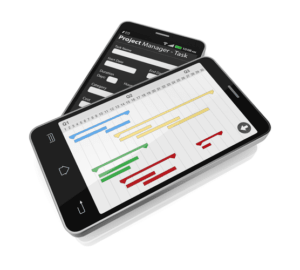Contra Accounts: Explained, Popular Types and Examples

Within equity, an example of a contra account is the treasury stock account; it is a deduction from equity, because it represents the amount paid by a corporation to buy back its stock. Utilizing contra accounts in financial accounting has several significant advantages that enhance financial transparency and enable more effective financial management. Consider a business that offers an early payment discount to its customers, cutting their invoiced total by 3% if they pay within 1 week of invoicing.
Allowance for (Accumulated) depreciation

You can estimate the total to record in the allowance for doubtful accounts based on uncollectible revenue totals from the previous year or you can conservatively estimate the amount. If you keep a lot of inventory in stock, chances are that some of the inventory will become obsolete. This frequently happens to manufacturing companies that sell products with an expiration contra account date since any inventory remaining in stock past the expiration date quickly becomes obsolete. When the two balances are offset against each other they show the net balance of both accounts. This way the company can report an item on the balance sheet at itsoriginal amount and show a reduction in value separately in order to report itsnet realizable value.
Balance Sheet
- Usually, the asset account is listed first, and its contra asset counterpart is listed underneath, with the asset’s net value or book value.
- For the past 52 years, Harold Averkamp (CPA, MBA) hasworked as an accounting supervisor, manager, consultant, university instructor, and innovator in teaching accounting online.
- Anytime you need to depreciate an asset, you’ll use an accumulated depreciation contra asset account, which records the amount of depreciation that has been expensed while offsetting the value of the asset being depreciated.
- On the other hand, if you’re looking at a high-flying growth stock that reports new revenue growth records each quarter but has a massive allowance for doubtful accounts, there may be problems ahead.
- Contra asset accounts include allowance for doubtful accounts and the accumulated depreciation.
We’re firm believers in the Golden Rule, which is why editorial opinions are ours alone and have not been previously reviewed, approved, or endorsed by included advertisers. The Ascent, a Motley Fool service, does not cover all offers on the market. Charlene Rhinehart is a CPA , CFE, chair of an Illinois CPA Society committee, and has a degree in accounting and finance from DePaul University. Get instant access to video lessons taught by experienced investment bankers.
Example #1: Revenue Contra Account
For example, if the balance of accumulated depreciation increases from $20,000 to $50,000, this means that the depreciation expense amounts to $30,000, which will be listed in the income statement. For example, an asset was purchased by a company for $100,000 – that is, the historical cost of the asset was $100,000 – and its contra asset counterpart has a balance of $30,000. Therefore, the asset’s net value (or the book value) will be $70,000. Note that the asset account balance represents the purchase price of the asset in question, also known as its historical cost. Instead of reporting the assets at their carrying amount directly, assets are reported at their historical costs and are reduced to book value by reporting the allowance for depreciation along with it.

Learn financial statement modeling, DCF, M&A, LBO, Comps and Excel shortcuts. Master accounting topics that pose a particular challenge to finance professionals. In other words, accumulated depreciation will be $10,000 each year until the car depreciates to $0 twenty years later. The main reason is to make the remaining shares more valuable, as their prices are expected to rise after the stock buyback. This means it received $4,500 in cash but needs to pay $5,000 back to the bondholders. Contra Accounts serve as a reduction to the balance of their corresponding accounts to find their net values.

Get instant access to lessons taught by experienced private equity pros and bulge bracket investment bankers including financial statement modeling, DCF, M&A, LBO, Comps and Excel Modeling. Treasury stock differs from other stocks in that it has no voting rights, and no dividends are paid to the treasury stock. The auditors aim to keep the balances at their adequate levels, but the controller might want to keep them as low as possible to reduce expenses and maximize profit levels.
- For example, accumulated depreciation will go along with related assets.
- It is a contra asset account and is directly related to the accounts receivable (asset).
- As mentioned, companies do not represent these accounts on the balance sheet.
- We will define what contra accounts are, the types of contra accounts and provide examples to illustrate.
- This contra-asset account reduces the accounts receivable balance on the balance sheet to its net realizable value.
- Contra liability accounts are special accounts in the liabilities section of the balance sheet.
- Taking the example of CCC again, the company has $50,000 in accounts receivable at year-end of December 31.
Is a Contra Account a Debit or Credit?
On the other hand, accumulated depreciation is a contra-asset account. This account offsets the balance in the respective asset account that they pair with on the balance sheet. For example, if an account has a debit balance, a contra account will have a credit balance. Thus, netting off both will result in the final amount for the account.
- Contra asset accounts are a type of contra account that net off against asset accounts.
- These examples illustrate how contra accounts are used in various contexts to provide a more accurate picture of a company’s financial position and performance.
- Including contra revenue accounts is important in the income statement because it shows the original amount of sales the firm has made, along with any factor that has reduced that amount.
- If you offer credit terms to your customers, you probably know that not all of them will pay.


